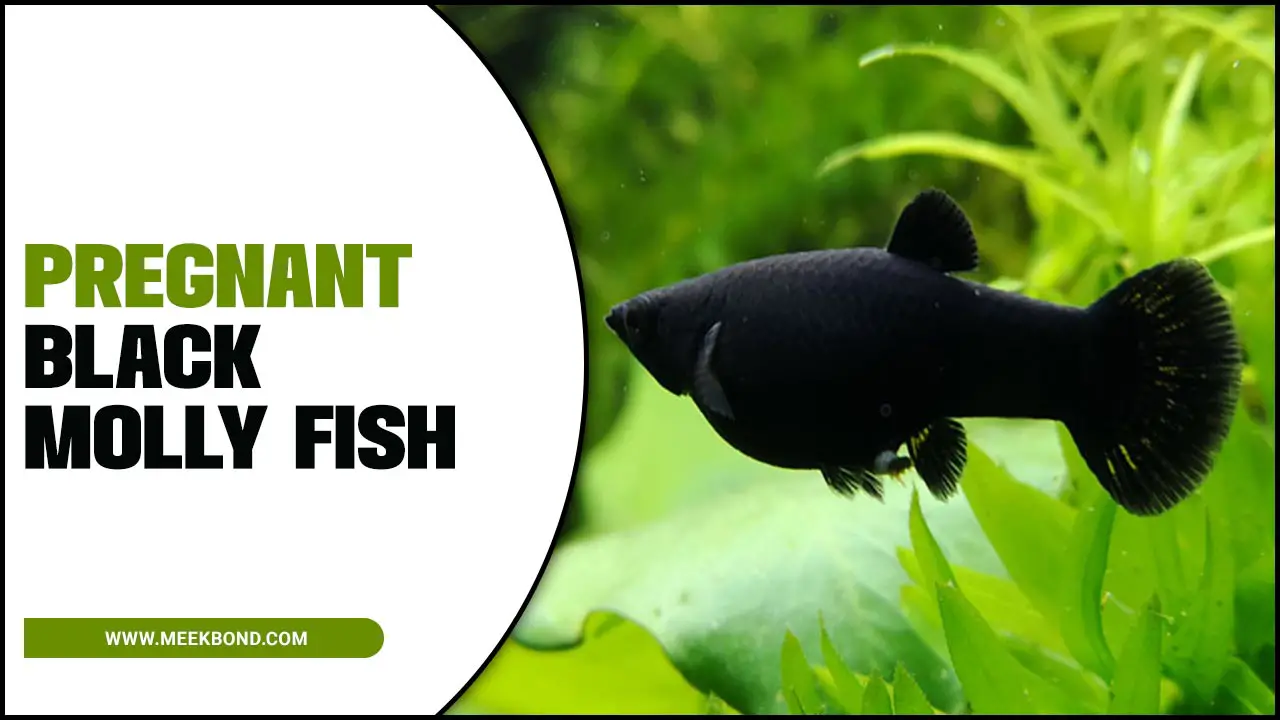Knowing when a guppy is done giving birth is important because it allows you to care for both the mother and her fry properly. Guppies are livebearers, meaning they give birth to fully formed and independent fry instead of laying eggs.
The birthing process can be stressful for the mother, and she may become exhausted or stressed if she continues to give birth for an extended period of time. By monitoring the birthing process, you can ensure that the mother has a chance to rest and recover after giving birth.
Here we will guide you through everything on how to know when Guppy is finished giving birth. So, whether you’re a seasoned aquarium enthusiast or a new parent to a pregnant guppy, read on to learn more about this incredible process.
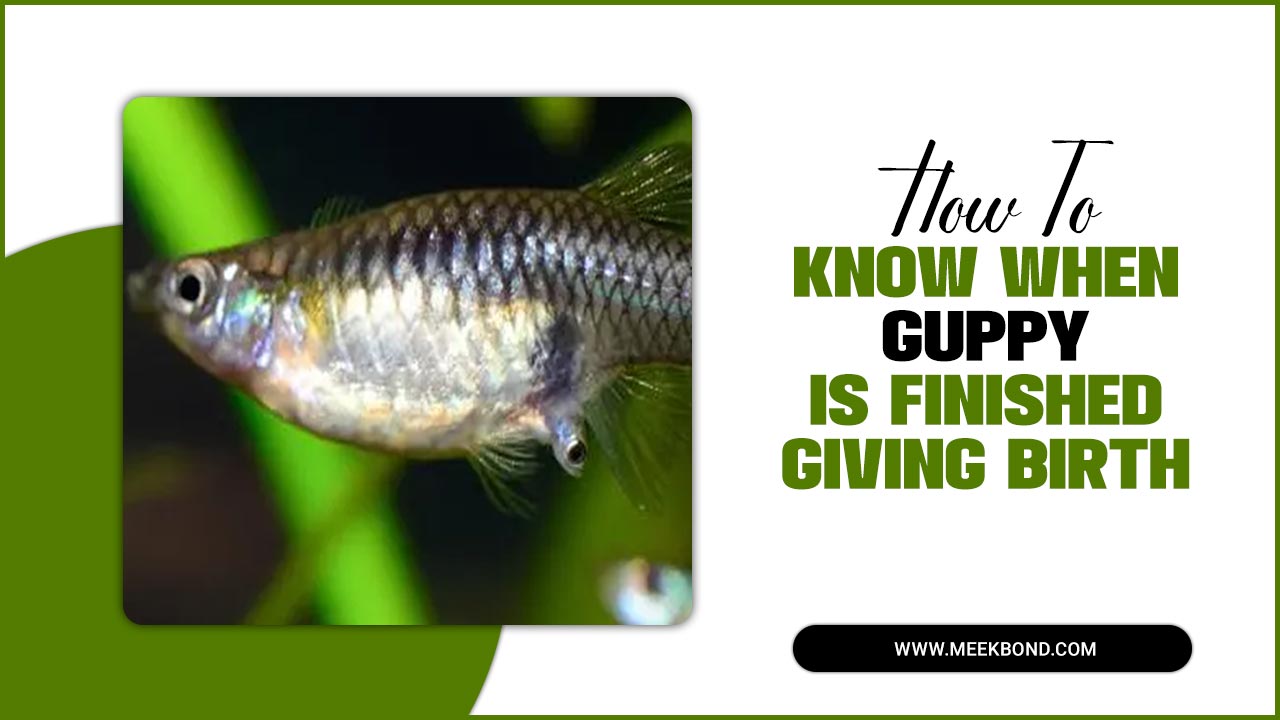
How To Know When Guppy Is Finished Giving Birth – Expert Guide
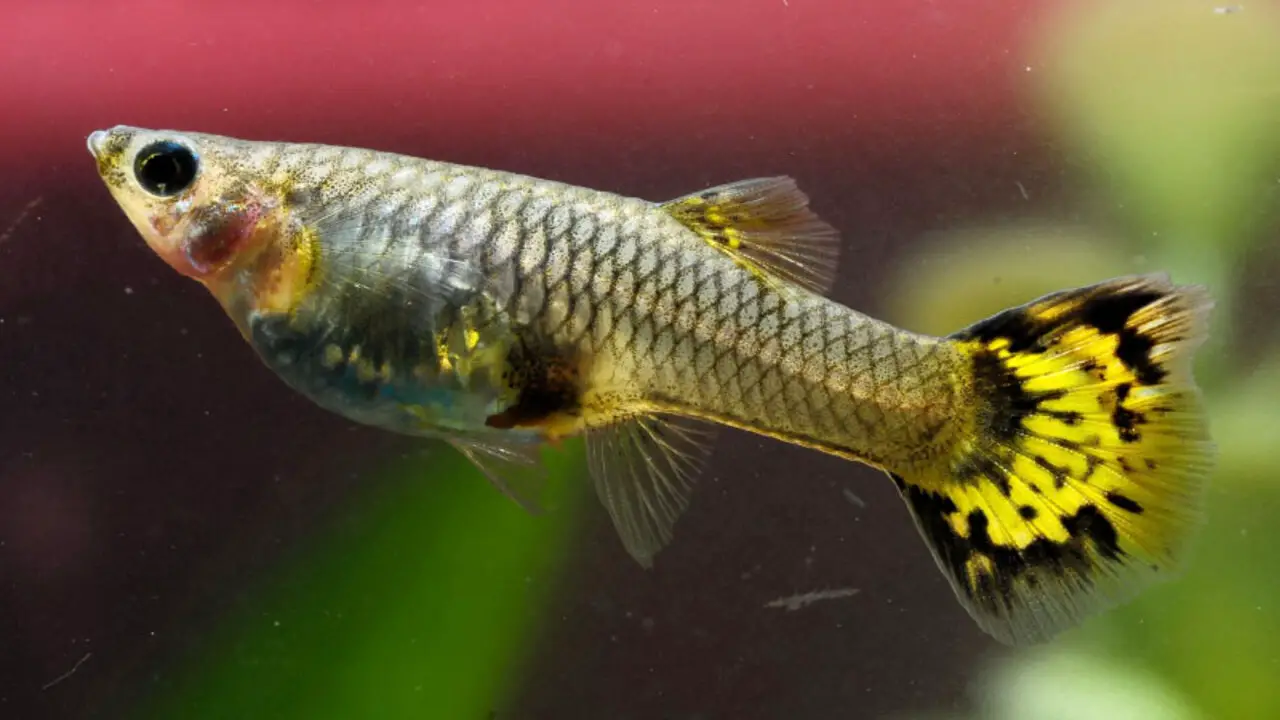
To determine if a guppy has finished giving birth, there are several key indicators to look out for. First, observe the guppy for signs of contractions and labor, such as twitching or straining. Additionally, note the gravid spot’s size on the guppy’s belly; a smaller or faded spot may indicate that the birthing process is complete.
Keeping track of the number of fry born can also help determine if the guppy is finished giving birth. If the female guppy continues to exhibit stress or discomfort behaviors, it may indicate that she still has more fry to give birth to. Lastly, carefully inspect the breeding tank for any remaining eggs or fry. Below we discuss more in detail how to know when Guppy is finished giving birth.
Recognizing The Signs Of A Guppy Ready For Birth
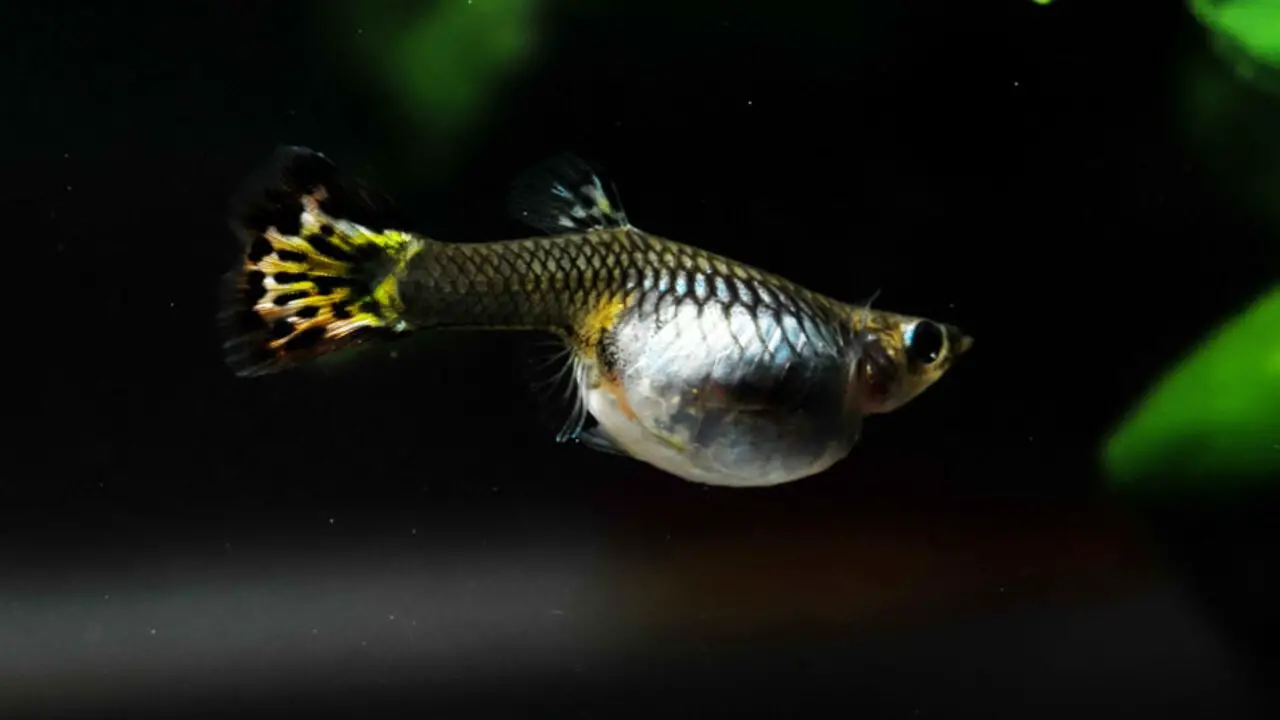
To recognize when a guppy is ready to give birth, look for a gravid spot on the female guppy’s abdomen, which indicates she is carrying fry. Pay attention to behavioral changes such as hiding, restlessness, or spending more time near the bottom of the tank.
Observe contractions and visible signs of fry emerging from the guppy’s ovipositor. To ensure the safety of the fry, use a breeding box or separate tank to monitor the guppy and prevent other fish from eating them. Having a care plan for the newborn fry after birth is also important.
Physical Changes In Pregnant Guppies
During pregnancy, female guppies undergo several physical changes. One noticeable change is a larger belly, as the growing fry inside causes the abdomen to expand. Another common sign is a dark spot near the anal fin, known as the gravid spot, which becomes more prominent as the gestation period progresses. Additionally, some pregnant guppies may develop a curved spine.
It’s also important to observe the behavior of other fish in the aquarium, as they may show increased interest in the pregnant guppy. Furthermore, pregnant guppies may become less active and isolate themselves before giving birth. Observing signs of contractions, such as a pulsing abdomen or a sudden burst of energy, can indicate that birth is imminent. Once the guppy gives birth, removing her from the breeding tank is essential to prevent her from eating the newborn fry.
Birth Behavior In Guppies- What To Look For?
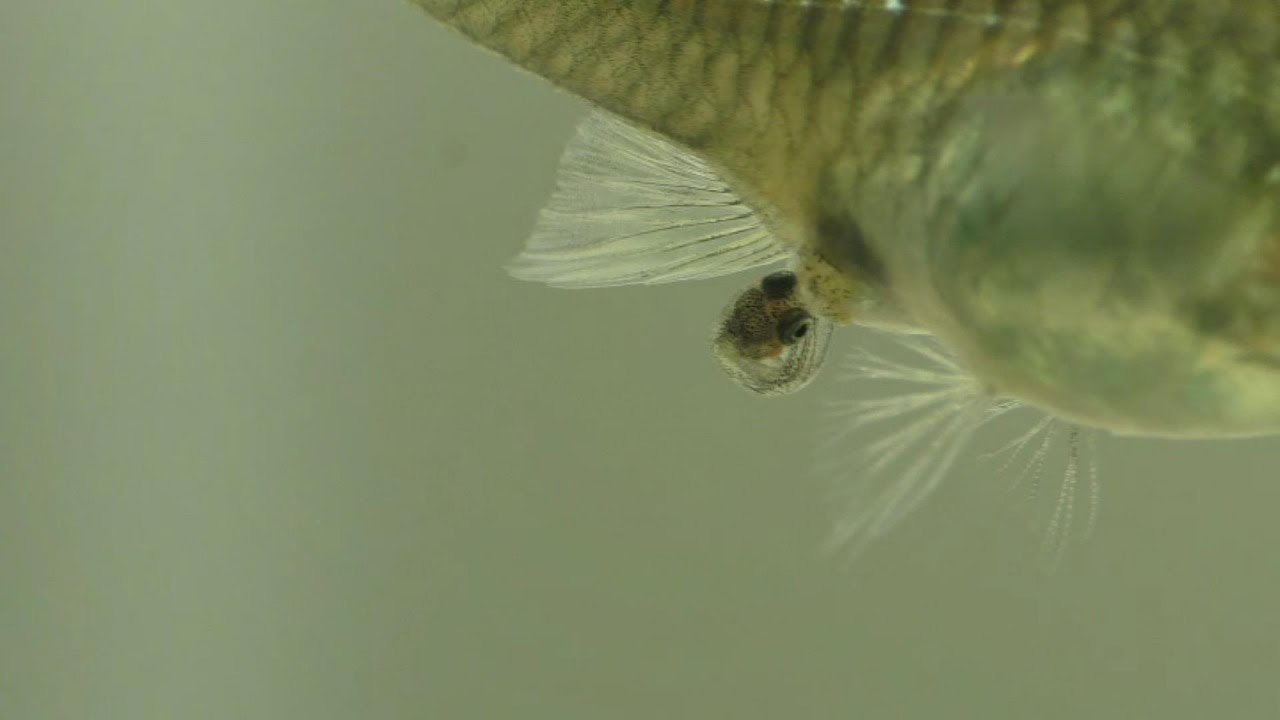
After giving birth, female guppies may exhibit increased activity and swimming behavior. Removing the fry from the breeding tank, as the mother guppy may eat them, is important. Look for signs of stress or illness in the mother and allow her time to rest before reintroducing her to the tank.
Resumption Of Normal Swimming Patterns
After a guppy has given birth, she will typically resume her normal swimming patterns within a few hours. However, if you notice that the guppy is sluggish or hesitant to swim, it could be a sign of complications.
It’s important to closely monitor the guppy for abnormal behavior after giving birth. Providing a stress-free environment is crucial to avoid post-birth complications. If you observe any unusual behavior or if the guppy appears to be in distress, it is recommended to contact a veterinarian for further assistance.
Changes In Eating Habits
After giving birth, female guppies may experience increased hunger due to the energy expended during the birthing process. However, it is not uncommon for some guppies to refrain from eating for a few days due to post-birth stress.
It’s important to monitor their appetite closely as a significant decrease in food consumption may indicate illness or complications. Overfeeding should also be avoided to prevent potential health issues. A gradual increase in appetite after a few days is a positive sign that the guppy is recovering well from giving birth.
Absence Of Gravid Spot
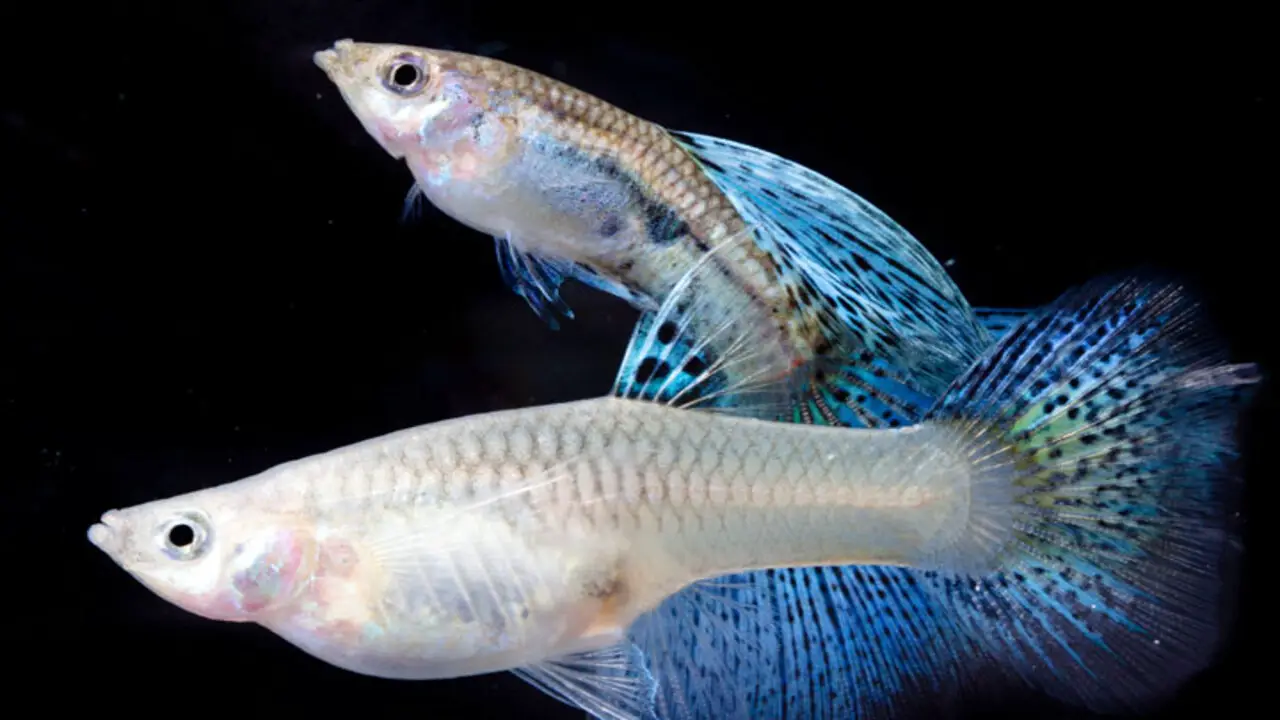
Once a guppy has finished giving birth, the gravid spot on her abdomen will disappear. This dark spot, which indicates pregnancy, fades after the fry has been delivered. After birth, female guppies may exhibit increased activity or agitation, potentially due to hormonal changes.
Additionally, their appetite may return, and they will resume normal feeding. Maintaining a clean aquarium and monitoring water quality following birth is crucial. Remember that guppies may give birth in multiple batches, so vigilant observation for signs of delivery is necessary.
Guppy Pregnancy And Birth Process
Guppy pregnancy typically lasts 21 to 30 days, during which several key signs indicate that the guppy is getting ready to give birth. These signs include the presence of a dark gravid spot and noticeable behavioral changes such as hiding or increased activity.
The birthing process involves the guppy releasing fry (baby fish) one at a time over several hours. Once all the fry is born, the female guppy will cease giving birth and may even eat her own young if not separated. Therefore, providing a safe and separate space, such as a separate tank or a birthing tank, is crucial where the fry can grow and thrive.
The Life-Cycle Of Guppies
Guppies, being livebearers, give birth to fully-formed fry instead of laying eggs. The gestation period for guppies typically lasts around 4-6 weeks. Observing a swollen abdomen and a dark gravid spot near the anal fin is one way to know when a guppy is ready to give birth. Interestingly, guppies often give birth to multiple fry batches throughout their lifetime.
Guppy Pregnancy- What To Expect?

During guppy pregnancy, you can expect the female guppy to have a larger belly and vertical stripes on their body. The gravid spot near the vent will darken or become more prominent as the due date nears. Guppies give birth every 4-6 weeks, producing anywhere from 2 to 200 fry per birth. After giving birth, separate the female guppy from the fry to prevent them from being eaten.
How To Care For Newborn Guppies?
To care for newborn guppies, separate the pregnant guppy from other fish before giving birth. Transfer the newborns to a separate tank with a sponge filter and heater. Feed them small amounts of food several times daily and keep the water clean with regular changes. Monitor for any signs of illness or deformities.
Providing A Safe Tank Environment For Guppy Fry
To ensure the healthy growth and survival of guppy fry, you must provide them with a separate tank where they can thrive without being preyed upon by adult fish. A sponge filter or air stone can create gentle water flow in the fry tank, promoting their overall well-being.
Maintaining optimal water conditions is crucial, with a temperature range of 78-82°F and frequent water changes to ensure good water quality. Adding live plants or artificial structures as cover will help the fry feel secure and provide a hiding place. Feed the fry small amounts of specialized food or finely crushed flakes several times daily to support their nutritional needs.
Feeding Your Newborn Guppies
Baby guppies can consume commercial fry food or crushed flakes once they are born. Feeding them frequently, about 4-5 times a day, is crucial, ensuring a balanced diet for their growth and well-being. One should avoid overfeeding the baby guppies as it can lead to water quality problems and harm them. Considering a specialized fry food with high protein and essential nutrients is advisable. This helps provide optimal nutrition for the healthy development of newborn guppies.
Common Misconceptions About Guppy Birth

Guppies often give birth in batches over a period of several hours or days rather than all at once. To prevent cannibalism, it is important to separate the baby guppies from the adult ones. Immediately after birth, guppy fry can swim and feed on their own. Contrary to popular belief, a gravid spot on a female guppy’s belly does not necessarily imply imminent birth. Maintaining proper water conditions and providing adequate nutrition can improve the success rate of guppy births.
Conclusion
Understanding the signs of a guppy ready for birth is crucial for caring for your fish. Look for physical changes such as a gravid spot and behavioral changes like hiding or being more active. Once the birth is complete, observe the post-birth behavior of the guppies, including the resumption of normal swimming patterns, changes in eating habits, and the absence of the gravid spot.
Providing a safe tank environment for newborn guppies and feeding them appropriately is important. Remember, not all guppies give birth simultaneously, and the number of babies a guppy can have in one birth varies. By being aware of these facts and misconceptions, you can ensure the well-being of your guppies and enjoy the rewarding experience of breeding them. Hope now you understand how to know when Guppy is finished giving birth.
Frequently Asked Questions
Can Guppies Give Birth Over Several Days?
Yes, guppies can give birth over several days. Female guppies have the ability to store sperm and fertilize eggs over a period of time. Observe their behavior for signs such as hiding or erratic swimming to know when a guppy is ready to give birth. After giving birth, removing the female from the birthing tank is important to prevent her from eating her young.
What Does Guppy Look Like After Giving Birth?
After giving birth, a female guppy may appear slimmer and have a less prominent gravid spot. She may also be more active and swim around more. Check the tank for any remaining fry, which can hide in plants or decorations. Monitor the female guppy for signs of stress or illness post-birth.
Why Are My Guppies Dying After Giving Birth?
There can be several reasons why guppies may die after giving birth. It could be due to stress, poor water quality, inadequate nutrition, or underlying health issues. It is important to provide a suitable environment and proper care to ensure the survival of guppies post-birth.
Is My Guppy In Labor?
Signs of guppy labor include a distended belly, hiding behavior, increased breathing rate, and a “gravid spot” near the tail. Look for contractions or “shimmies” from the guppy’s body. If you suspect labor, prepare a separate tank for the fry to prevent predation.
When To Remove Pregnant Guppy To Birthing Tank?
It is crucial to move pregnant guppies to a birthing tank about a week before their due date. Look for physical changes like a dark gravid spot or protruding belly and behavioral changes like agitation or hiding, indicating that the guppy is ready to give birth. Monitor closely and move her immediately when signs of labor appear.

Aquarium passion is all about connecting with the aquatic life and providing education to the public on the importance of these creatures. We showcase a wide variety of marine life through our exhibits as well as working with schools to provide unique learning opportunities for students of all ages.



